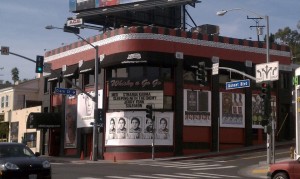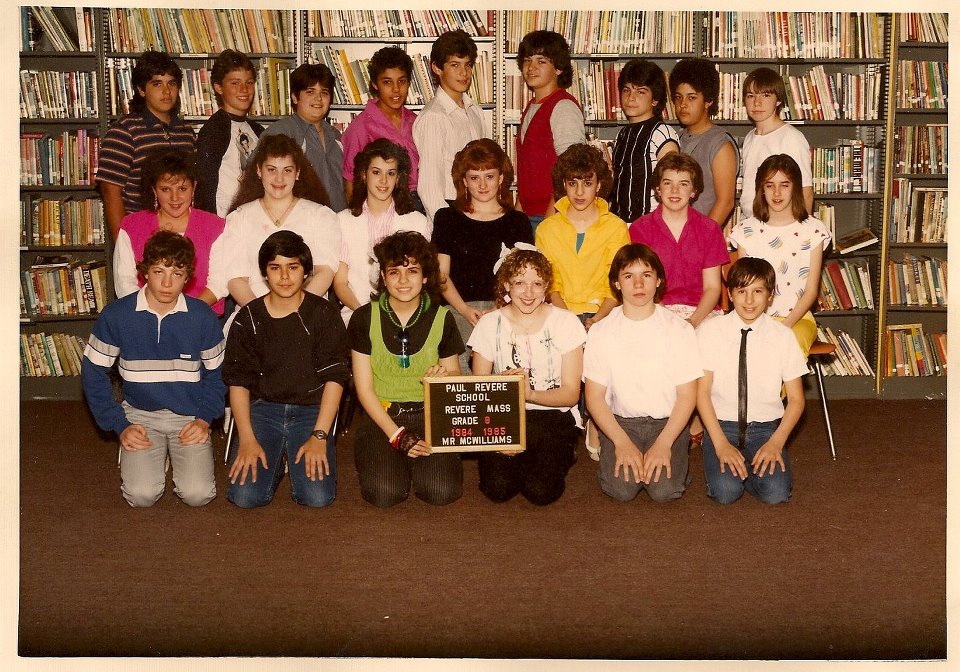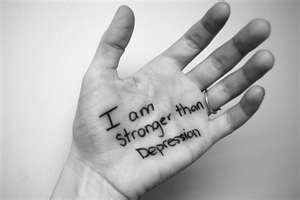The second annual Joe “Zippo” Kelley benefit is in a little under a month from now. I’ll have much more to write about this as the date gets closer, but for now I’m just going to share this:
Seeds Of Rage At The Paul Revere School
My friend Marc Serra posted an eighth-grade class picture from the Paul Revere School, circa 1984-85. The scowl on my face says a lot about the time.
Here I am, first from left in the back, looking like I want to stab someone in the eye:
The photo was snapped maybe a year or so after my brother died. I was gaining weight by the boatload and couldn’t seem to stop. Some of the kids picked on me as a result, though I gave as good (or badly) as I got. Things at home were less than harmonious for the obvious reasons.
This is around the time I was starting to rebel. I grew my hair long and started staying out late, especially when I was with my father, who didn’t keep tabs on me as closely as my mother did. I learned to escape not just in food, but in alcohol and weed.
The school district knew I was an emotional, troubled kid. I started getting extra help in elementary school because of the toll Crohn’s Disease had taken on my young body. It worked at first, but when I went to the Paul Revere School for seventh and eighth grade, the safety was off the gun.
There, kids were divided into three groups: The A group, the B group and the C group. The first was for the kids who consistently got As on their report cards. To the lower groups, they were sort of an elite class. The B group is where most kids were. Then there was my group, the C group, where the kids with bad grades were sent to rot. I think the school was trying to do what was best for students. But the stigma of being on the low end of the student body was damaging all the same.
Call it the unintended consequence.
The C kids were never really encouraged to study their way to the B or A groups. We just got teachers that gave us the bare minimum for work and treated us like troublemakers to be kept in line.
Indeed, the C group was where all the troublemakers were. I was a quieter version of trouble. I mostly hurt myself by dabbling in addictive substances and ignoring the academics. Other kids in my class were always getting into fights and some were already getting arrested. There were some so-called normal kids in the mix who did study their way into the higher groups.
Some of the C kids got picked on a lot, including me, though I also met a lot of great kids along the way.
I remained a slacker in high school and it took a couple years of community college before I found my ability to study hard and advance.
It all worked out for me, and I have no regrets. Those days were what they were, and as I look at this picture, I see kids I remember fondly.
Marc Serra and I bonded over music, including the AC/DC song at the start of this post. All the girls in the row in front of me were kind to me. One of them, Lena Cerundolo (third from left) lost a sibling, too. Several kids were originally from the Roosevelt School in the Point of Pines, and we had essentially grown up together. I hope everyone in the picture is doing well today. I know many of them are, as I’m in touch with them on Facebook.
This picture is like the fourth-grade report card I wrote about recently. It’s a snapshot in time, something I can look at and suddenly remember everything I was going through at that point.
Staring at it in the rear-view mirror, I have no regrets or grudges. History played out as it was meant to, and here we all are.
Thanks for sharing, Marc.
THE OCD DIARIES, Two Years Later
Two years ago today, in a moment of Christmas-induced depression, I started this blog. I meant for it to be a place where I could go and spill out the insanity in my head so I could carry on with life.
In short order, it snowballed into much more than that.
Mood music:
http://youtu.be/IKpEoRlcHfA
About a year into my recovery from serious mental illness and addiction — the most uncool, unglamorous addiction at that — I started thinking about sharing where I’ve been. My reasoning was simple: I’d listened to a lot of people toss around the OCD acronym to describe everything from being a type A personality to just being stressed. I also saw a lot of people who were traveling the road I’d been down and were hiding their true nature from the world for fear of a backlash at work and in social circles.
At some point, that bullshit became unacceptable to me.
I started getting sick of hiding. I decided the only way to beat my demons at their sick little game was to push them out into the light, so everyone could see how ugly they were and how bad they smelled. That would make them weaker, and me stronger. And so that’s how this started out, as a stigma-busting exercise.
Then, something happened. A lot of you started writing to me about your own struggles and asking questions about how I deal with specific challenges life hurls at me. The readership has steadily increased.
Truth be told, life with THE OCD DIARIES hasn’t been what I’d call pure bliss. There are many mornings where I’d rather be doing other things, but the blog calls to me. A new thought pops into my head and has to come out. It can also be tough on my wife, because sometimes she only learns about what’s going on in my head from what’s in the blog. I don’t mean to do that. It’s just that I often can’t form my thoughts clearly in discussion. I come here to do it, and when I’m done the whole world sees it.
More than once I’ve asked Erin if I should kill this blog. Despite the discomfort it can cause her at times, she always argues against shutting it down. It’s too important to my own recovery process, and others stand to learn from it or at least relate to it.
And so I push forward.
One difference: I run almost ever post I write by her before posting it. I’ve shelved several posts at her recommendation, and it’s probably for the best. Restraint has never been one of my strengths.
This blog has helped me repair relationships that were strained or broken. It has also damaged some friendships. When you write all your feelings down without a filter, you’re inevitably going to make someone angry.
One dear friend suggested I push buttons for a good story and don’t know how to let sleeping dogs lie. She’s right about the sleeping dogs part, but I don’t agree with the first suggestion. I am certainly a button pusher. But I don’t push to generate a good story. I don’t set out to do that, at least.
Life happens and I write about how I feel about it, and how I try to apply the lessons I’ve learned. It’s never my way or the highway. If you read this blog as an instruction manual for life, you’re doing it wrong. What works for me isn’t necessarily going to fit your own needs.
Over time, the subject matter of this blog has broadened. It started out primarily as a blog about OCD and addiction. Then it expanded to include my love of music and my commentary on current events as they relate to our mental state.
I recently rewrote the “about” section of the blog to better explain the whole package. Reiterating it is a pretty good way to end this entry. You can see it here.
Thanks for reading.

Slaying Old Fears In The Hollywood Hills
This week I’ve been in Los Angeles on business. But I’ve been slaying some old demons while here.
Mood music:
Let’s go back 20 years — July 1991 — when I came out here with Sean Marley on my first trip to the west coast. I didn’t really want to go because I was afraid of everything and everyone. But Sean was red hot about the idea, and back then I was always out to impress the man. So off we went, on a 10-day California trip that would take us as far north as Eureka and as far south as Los Angeles. We lived in the rental car the whole time except for L.A., where we stayed in a friend’s apartment.
In L.A., we hooked up with a guy who used to live in the Point of Pines in Revere. I didn’t remember him, but he and Sean were tight as kids. Michael was his name. Michael took us to visit a couple of his friends who were living the stereotypical Hollywood lifestyle. They had a band, but sat in their cramped bungalow all day, surrounded by towers of empty beer cans and cigarette boxes, watching all the bad daytime TV they could feast their eyes on.
One of them asked me where we were from. The Boston area, I told him.
“Dude,” he said through the cloud of cigarette smoke encircling his head. “That’s a pretty long way from here.”
The statement filled me with more terror.
A pretty long way from here. From my safe place in the basement apartment at 22 Lynnway, Revere, Mass.
Terror.
That’s pretty much what the trip was. Sean ate it all up and had the time of his life, despite me.
I didn’t know back then that I suffered from OCD-induced fear and anxiety. I was still many years away from the therapy, medication and spiritual conversion. I had no idea what the 12 steps were when I was 21. Too bad, because I SHOULD have had the time of my life on that trip, too.
But that’s what fear does. It robs you blind. Robs you of everything that should make life worthwhile.
Fast-forward to the present. I’m back in LA on business. But I decided I was going to do a few things I couldn’t do last time I was here because of the fear.
I rented a car and drove all over Los Angeles and went as far south as Orange County, using the same freeways that scared the daylights out of me back then.

I took walks all over the place and mingled freely with people — something else I was afraid to do before.
I went deep into the Hollywood Hills and drove to some old murder sites because as a kid these places left me obsessed and afraid. The Manson Murders was particularly scarring on my young mind. From the first time I saw the TV movie “Helter Skelter” in the late 1970s through the first time I read the book from beginning to end in the 1980s it’s been the stuff of nightmares. That has fed the obsessive part of me. I read that book two or three times a year and knew exactly where every murder scene was before setting foot on the plane.
So I traveled to Cielo Drive, where Sharon Tate and her friends were murdered, and Waverly Drive a half-hour away, where Leno and Rosemary LaBianca were murdered the following night.



I also visited the scene of the Wonderland Murders.

Along the way, I visited the Sunset Strip, the cradle of Rock ‘N Roll History.


Driving in strange places scares me less and less the more I do it. This was a big step in slaying the old fears.
The scary glow of the Manson Murders was also dimmed considerably this trip. When you look across the canyon to where the Tate-Polanski house once stood, the scene is peaceful. Driving to the gate of where the murders happened killed the mystique for me.
I think I’ll put the old “Helter Skelter” book away now.
The lesson of this post is that facing fears is sometimes the only way to slay them. I did the hardest work on myself long before this trip. But the journey has been the icing on that cake.
When you learn to manage your fears, a whole new world is opened up before you.
Is It Bad That Two Family Members Are In Therapy?
If more than one member of the same family is in therapy, is that a sign that the family is seriously screwed up?
Mood music:
http://youtu.be/iFAweWkqqjk
That’s the question we are asking ourselves these days. As the reader knows by now, I’ve been in therapy for OCD and related issues for seven years. Duncan sees a children’s therapist to help him work through his ADHD.
Is this family a basket case? In my opinion, it’s exactly the opposite.
I wouldn’t be enjoying the equilibrium I have today if not for the years of therapy.
Meanwhile, Duncan is learning a lot of helpful techniques to help him focus and control his anger.
I’m a staunch advocate of therapy as a tool for mental health. I think too many people are embarrassed when it’s suggested that therapy would do them some good. People who stay away from therapy because they feel it’s a mark of weakness have no idea what they are denying themselves. That makes me sad.
It’s a funny thing when I talk to people suffering from depression, addiction and other troubles of the mind. Folks seem more comfortable about the idea of pills than in seeing a therapist. After all, they’re just crazy “shrinks” in white coats obsessed with how your childhood nightmares compromised your adult sex life, right?
I’ve been to many therapists in my life. I was sent to one at Children’s Hospital in Boston as a kid to talk through the emotions of being sick with Chron’s Disease all the time. That same therapist also tried to help me and my siblings process the bitter aftermath of our parents’ divorce in 1980.
As a teenager, I went to another therapist to discuss my brother’s death and my difficulty in getting along with my stepmother (a wonderful, wonderful woman who I love dearly, by the way. But as a kid I didn’t get along with her).
That guy was a piece of work. He had a thick French accent and wanted to know if I found my stepmother attractive. From the moment he asked that question, I was done with him, and spent the rest of the appointment being belligerent.
That put me off going to a therapist for a long time. I started going to one again in 2004, when I found I could no longer function in society without untangling the barbed wire in my head. But I hesitated for a couple years before pressing on.
The therapist I started going to specialized in dealing with disturbed children and teenagers. That was perfect, because in a lot of ways I was still a troubled kid.
She never told me what to do, never told me how I’m supposed to interpret my disorder against my past. She asked a lot of questions and had me do the work of sorting it out. That, ladies and gentlemen, is what a good therapist does. They ask questions to get your brain churning, dredging up experiences that sat at the back of the mind like mud on the ocean floor. That’s how you begin to deal with how you got to the point of dysfunction.
She moved to Florida a year in and I started going to a fellow who worked from his house. I would explain my binge eating habits to him, specifically how I would down $30 worth of McDonald’s between work and home.
“You should stock your car with healthy foods like fruit, so if you’re hungry you can eat those things instead,” he told me.
That was the end of that. He didn’t get it. When an addict craves the junk, the healthy food around you doesn’t stand a chance. The compulsion is specifically toward eating the junk. He should have understood. He didn’t. Game over, dumb ass.
The therapist I see now is a God-send. He was the first therapist to help me understand the science behind mental illness and the way an inbalance in brain chemistry can mess with your thought traffic. He also provided me with quite an education on how anti-depressants work. Yes, friends, there’s a science to it. Certain drugs are designed to shore up the brain chemicals that, when depleted, lead to bi-polar behavior. Other meds are specifically geared toward anxiety control. In my case, I needed the drug that best addressed obsessive-compulsive behavior. For me, that meant Prozac.
That’s not to say I blindly obey his every suggestion. He specializes in stress reduction and is big on yoga and eliminating coffee from the daily diet. Those are two deal breakers for me. Yoga bores the dickens out of me. If you’ve been following this blog all along, I need not explain the coffee part.
I also find it fun to push his buttons once in awhile. I’ll show up at his office with a huge cup of Starbucks. “Oh, I see you’ve brought drugs with you,” he’ll say.
Our relationship has settled into this banter back and forth, and it continues to serve its purpose. We go over everything happening in my life at that given moment, and if he suspects I’m thinking in unproductive ways or lying to myself, he calls me on it.
I’m better for it.
All that is the long way of saying I think it’s absolutely healthy if multiple members of one family are in therapy at the same time.

Learn From My Mistakes
In all my efforts to get sane a few years ago, I did a lot of stupid things. I’m sharing it with you here so you don’t make the same mistakes:
Mood music:
http://youtu.be/l4Xx_vjGnlo
–Don’t try to control your compulsive binge eating problem by fasting. You won’t make it through the morning, and then you’ll binge like you’ve never binged before.
–Don’t mix alcohol with pills that have the strength of four Advil tablets in an effort to kill your emotional pain as well as your physical pain. That sort of thing might kill you.
–Don’t hate the people in your life for the bad things they’ve done. Remember that they’re fucked up like you and that hating them will never make the pain go away. In fact, it’ll just make it worse.
–Avoid the late-night infomercials. Those things were designed for suckers, especially suckers who can’t sleep because they’re so overcome with fear and anxiety that they see knife-wielding ghosts around every corner. You might find yourself falling for it and spending stupid sums of money on fraudulent bullshit like this.
–Don’t spend every waking hour worrying about and rushing toward the future. You will miss all the beauty in the present that way, and that’s a damn shame.
–Don’t try to control everything. Doing so just makes you look like an asshole.
–Don’t put down others just so you’ll feel better about yourself. You’ll just ruin another life, and you will not feel better. You’ll feel worse.
–Don’t try to eradicate your mental disorder. Learn to work with it instead, because once your brain reaches adulthood, there’s no turning back.
–Don’t spend your life trying to please everyone. You never will, and they usually won’t deserve the effort.
—Don’t over-think things. Thinking doesn’t make you smarter.
—Don’t bitch about your job. You’ll just annoy people. Change yourself and your attitude first. Then, if you still don’t like the job, work on finding a new one and keep doing your best at the current job in the meantime.
—Don’t whine about how tough everything is. Life is supposed to be tough at times, and wallowing in it keeps you from moving on to the good stuff. To put it another way, stop seeing yourself as a victim.
Class dismissed.

R.I.P. Daddy’s Junky Music
I just saw a news clip about Daddy’s Junky Music closing after nearly 40 years. What a shame. I always loved that store, and when Skeptic Slang was up and running, they were very good to us.
We went to the Peabody, Mass. store in search of gear in 1993 and they hooked us up with monitors, 2 massive PA speakers and a mixing board. They let us take all this stuff on a monthly payment plan and, when we broke up and needed to unload the stuff, they took it back. They probably saw us as we were: Young pups who had no idea what we were doing. But they still made us feel important and I’ll never forget that. I was living in Lynnfield, Mass. at the time and we rehearsed in a nuclear bomb shelter build under the garage.
Hanging out in that room for a year with all that equipment, making music, writing and hiding from the world, was a blissful time sandwiched in between all the turmoil. Daddy’s Junky Music helped make it happen, and I’m forever grateful.
Here’s the story on its closing from New Hampshire’s Union Leader:
New Hampshire Union Leader, Published Oct 27, 2011 at 3:00 am (Updated Oct 26, 2011)
Daddy’s Junky Music, the 39-year-old company that flourished thanks to the New Hampshire Advantage, folded on Wednesday, a victim of the struggling economy and shifts to Internet sales, founder Fred Bramante said.
Bramante said Wednesday was one of the worst days of his life.
“I had to tell people who had been working with me for decades they were losing their jobs, and it was heartbreaking,” said Bramante, a member of the state Board of Education.
He said the four New Hampshire stores employed 52 full-time workers and 14 part-time workers. The company also has stores in Vermont, Massachusetts and Connecticut.
Bramante made his first guitar deal in 1972, when the lead guitarist of his basement rock band said his friend needed to sell a red Hagstrom 2 guitar to raise bail money.
Bramante knew the guitar was worth more than $600. He bought it, resold it and entered the world of music retail.
His business grew on the New Hampshire Advantage, as wannabe rocks stars flocked to New Hampshire from surrounding states to purchase instruments and amplifiers.
Financially healthy, Daddy’s branched out into all New England states and New York. Recognition followed: New Hampshire retailer of the year, national retailer of the year and best service of any company in America.
Bramante’s stature grew too. He ran for governor a couple of times in the 1990s, and he was an early advocate of a state education focused property tax.
But for the last three years, the company has struggled because of the sour economy, he said. And another tax-free entity started eating into its sales.
“The New Hampshire Advantage is real, it worked, but the Internet advantage is really similar to the New Hampshire Advantage,” he said. His stores in sales-tax states lost sales to the Internet.
Get In The Van And Head To The Channel
A friend from the Point of Pines, Revere shared a memory yesterday. It involved getting in my brother Michael‘s van and going to see a rock legend perform at the Channel in Boston.
Mood music:
Julie Doyle Frascino read my post “Lost Brothers” and posted this on my Facebook page:
“Michael was such a good kid! I remember one time we all piled into that van he had and went to see the Joe Perry Project at The Channel rock club in Boston. It looked like a Cheech and Chong movie when we all pratically fell out of the van in the parking lot! Kids! We were all crazy back then!”
That van was quite a site. The paint was peeling off and the body was covered in rust. Exhaust fumes rose through tiny holes in the floor and into the back. It probably wasn’t good for his asthma.
But that van shuttled kids to a lot of shows at The Channel, which used to stand at 25 Necco St. in Boston. It’s where I first saw live Rock ‘n Roll and I would go on to spend a good chunk of the late 1980s there, usually with Sean Marley, Dan Waters and an assortment of others.
 Bands I saw there included Gang Green, The Neighborhoods, Kix, King Diamond, Flotsam and Jetsam, Extreme, The Circle Jerks, Slapshot and The Ramones.
Bands I saw there included Gang Green, The Neighborhoods, Kix, King Diamond, Flotsam and Jetsam, Extreme, The Circle Jerks, Slapshot and The Ramones.
The place had a bar called The Cage for the obvious reason that it was caged in. I couldn’t go in there for the first few years because I was under 21. There were a lot of 18-plus shows there, but I did manage to sneak into one 21-and-over show, which was The Ramones. I skipped the senior prom for that, and never regretted my choice. I couldn’t find a date for the prom, anyway.
They used to have Sunday afternoon shows that I loved going to because they were more lightly attended. It was also typically when the more obscure bands got to play, though one of those shows was The Neighborhoods, which Dan took me to see. Before that day, I had never heard of them. It wasn’t the type of band Sean was inclined to go see, because his tastes by that point were veering off to industrial metal, which wasn’t popular yet.
Dan shared his passion for that stuff, but he also had a deeper appreciation for the more melodic, pop-driven bands.
I spent a lot of angry nights heading to The Channel. I had a chip on my shoulder the size of Texas and I could slip through the front door, become invisible and shake my fist all night to whatever band was playing until I was exhausted and felt like I’d been kicked in the gut. Once I reached that state, I would feel better. That kind of pain is perfect for pushing the anger out a young kid’s pores.
Since my brother was five years older, I didn’t get to go to any shows in that van. But like him, I would shuttle a car full of friends to The Channel in a beat-to-hell, putrid green 1983 Ford LTD station wagon I bought from my aunt after I got my driver’s license. The radio didn’t work so I kept a portable radio in the front seat; one of those big cassette players we used to call ghetto blasters. That car also made a lot of packed runs to the Worcester Centrum to see the bigger bands, including four Metallica shows in 1989 alone, during that band’s “And Justice for All” tour.
But the trips to The Channel were always a lot more fun. They were short runs from Revere, which meant less opportunity for the car to break down en route.
In the worst of times, those were some of the best of times.

A Depressed Mind Is Rarely A Beaten Mind
A report in USA Today says 1 in 100 adults have planned their suicide in the past year, a statistic that doesn’t surprise me, knowing what I do about depression.
Mood music:
I’ve suffered a lot of depression in my day. I’m experiencing a touch of it right now. I’ve never seriously considered ending it. But I can easily see how someone in that state of mind could head in that direction.
From the report:
“There’s a suicide every 15 minutes in the United States, and for every person who takes his or her own life there are many more who think about, plan or attempt suicide, according to a federal report released Thursday.
“The analysis of 2008-09 data from the National Survey on Drug Use and Health found that rates of serious thoughts of suicide range from about 1 in 50 adults in Georgia (2.1 percent) to 1 in 15 in Utah (6.8 percent). Rates of suicide attempts range from 1 in 1,000 adults in Delaware and Georgia (0.1 percent) to 1 in 67 in Rhode Island (1.5 percent).
“Overall, more than 2.2 million adults (1.0 percent) reported making suicide plans in the past year, and more than 1 million (0.5 percent) said they attempted suicide in the past year, according to the researchers at the Centers for Disease Control and Prevention and the Substance Abuse and Mental Health Services Administration.”
I think I was just lucky. Or, more likely, my religious beliefs made suicide a line I wouldn’t cross. Instead, I dove head-first into a self destructive existence where I lived for my addictions.
Perhaps subconsciously, as I binged my way to 280 pounds and ate painkillers for breakfast (I was prescribed them for chronic back pain) I was slowly trying to kill myself. A troubled mind can easily rationalize that it’s not suicide if you’re not jumping off a building, pointing a gun at your head or wrapping a noose around your throat. Fortunately, I came to my senses before I could finish the job.
But I’ve seen relatives get hospitalized for suicidal talk and my best friend became one of the tragic statistics on Nov. 15, 1996. When depression takes hold on the vulnerable mind, you stop thinking clearly and, at some point, you lose full control of sane actions and thought. Some people think suicides were simply cowards who couldn’t cope with life’s everyday challenges. But they have no idea what they’re talking about.
Depression is an insidious beast that lurks like a vulture, waiting for you to get just tired enough to submit to the torture.
I’ve learned to see my own depression as just another chronic illness that comes and goes. I treat it with Prozac, regular visits to a therapist and a strict diet. I’ve learned, in a strange way, to still be happy when I’m depressed.
That sounds fucked up. But it’s the best way I can describe it.
Being lucky enough to have reached that point, I’ve made it my mission to help break the stigma.
Sadness and suicidal thoughts need not be the end. For a lot of people I know, it turned out to be just the beginning of a life full of wisdom and beauty.
My Mood Swing: A Soundtrack
I’m in a rotten mood this afternoon and I’m not sure why. Various people are pissing me off though. So I’m listening to songs that seem to commiserate with me. Allow me to share:
http://youtu.be/PBT5nAqMwvs
http://youtu.be/TraSBSNfpCg
That’s better.





